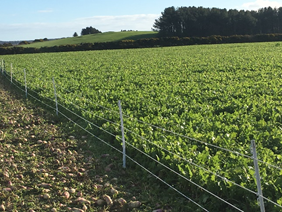Mineral Supplementation
21 September 2021Forage crops are good high energy and protein feeds; however, minerals (particularly trace elements) are low in forage crops. Therefore, mineral supplementation is advised where forage crops make up a large proportion of the animal’s ration. The silage/hay fed alongside forage crops will provide some additional minerals however, forage crops are low in most of the trace elements.
Brassicas contain high levels of antagonist’s (potassium and sulphur) which lock up magnesium and copper making them unavailable to the animal. Brassicas also contain glucosinolates which interfere with iodine absorption. Therefore, trace element supplementation is advised particularly for copper, cobalt, iodine and selenium. Most of the major minerals with exception of magnesium should be sufficient from forage crops. n fodder beet, the leaf is vital to providing the major minerals therefore if the agronomy is poor supplementation may be required.
Some key points to remember:
- Forage crops generally won’t provide sufficient magnesium for cows in late pregnancy.
- Brassicas and fodder beet leaves are high in calcium which needs to be considered if grazing dairy cows as this can predispose them to milk fever.
- Livestock grazed on brassicas often need iodine supplementation at least, although cobalt, copper and selenium supplementation are also advised.
- If fodder beet leaf is poorly grown or damaged, mineral supplementation is vital.
There are a few different options for supplementing minerals including free access, boluses, drenches, buckets/blocks, and injections. Remember you can also have too much of a good thing so whatever form of supplementation you choose do not provide multiple sources (e.g. bolus and minerals in the feed) as you may end up over supplying minerals leading to toxicity. Chat this over with your nutritionist or adviser if you are unsure.
Mary Young, mary.young@sac.co.uk
Sign up to the FAS newsletter
Receive updates on news, events and publications from Scotland’s Farm Advisory Service

